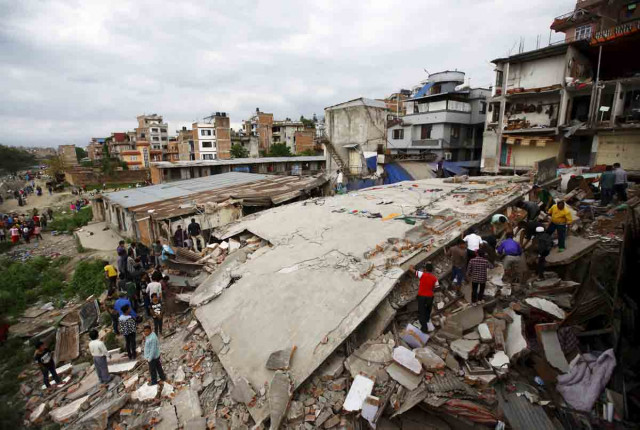Nepal earthquake
Landlocked, mountainous, with poor infrastructure, Nepal is going to need all the help it can get in the coming weeks

People try to rescue those trapped under a collapsed house in Nepal after an earthquake of 7.8 magnitude struck on April 25, 2015. PHOTO: REUTERS
Durbar Square, which is a Unesco world heritage site, has been devastated and the Dharahara Tower reduced to little more than a stump of rubble. Much of Kathmandu is made up of tightly packed habitation, poorly constructed and vulnerable to seismic activity. It sits on one of the most seismically active regions in the world, with the Himalayas being formed by the Indian tectonic plate driving under the Eurasian tectonic plate. They converge at a rate of about 4-5 centimeters a year. Casualty estimates, even with the biggest quakes, generally start off relatively small, but this was a large event close to the surface, 10-15km down which would have amplified the shaking effect. There were at least 14 aftershocks in the hours immediately following the main event, the largest of these being 6.6 which will have further damaged already fragile buildings. Pakistan is earthquake-prone as well, and Prime Minister Nawaz Sharif has already offered to do whatever may be possible to support and assist Nepal at this time of utmost need. Indian Prime Minister Narendra Modi has expressed similar sentiments and also offered assistance. Landlocked, mountainous and with a poor infrastructure, Nepal is going to need all the help it can get in the coming weeks. We support the government in reaching out at this time of crisis.
Published in The Express Tribune, April 26th, 2015.
Like Opinion & Editorial on Facebook, follow @ETOpEd on Twitter to receive all updates on all our daily pieces.














COMMENTS
Comments are moderated and generally will be posted if they are on-topic and not abusive.
For more information, please see our Comments FAQ